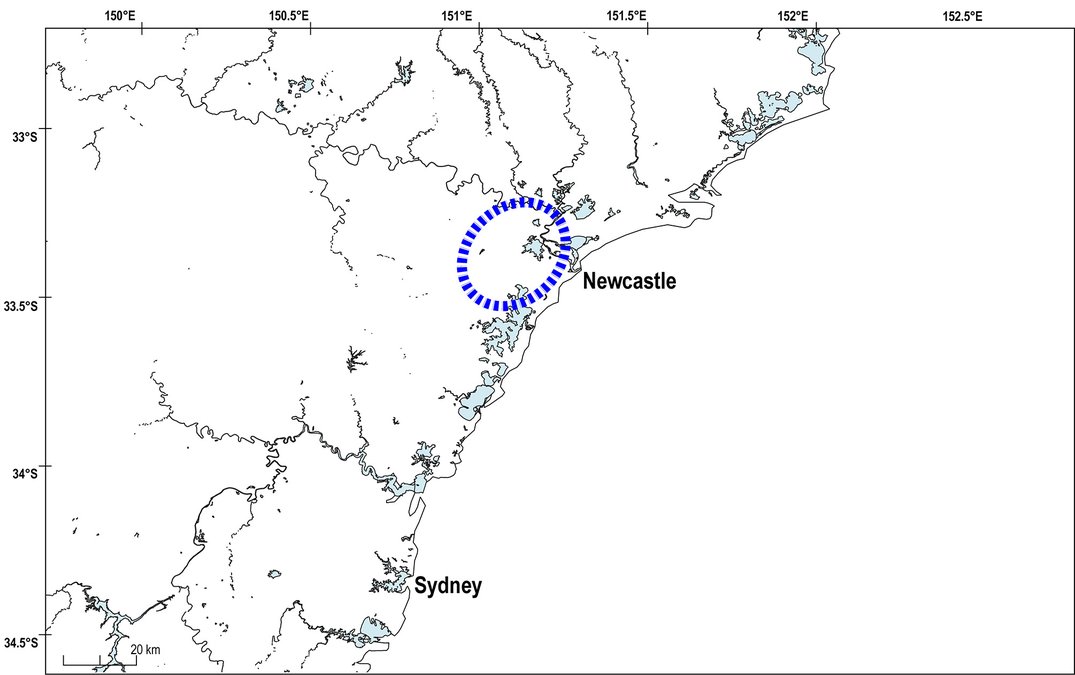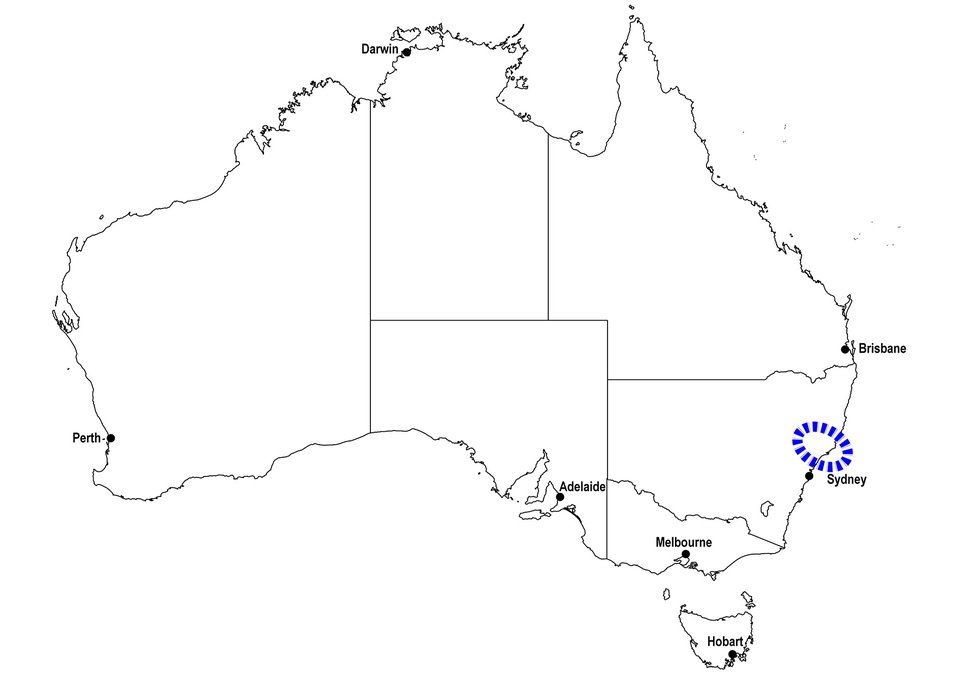Newcastle Funnel-web Spider, Atrax christenseni
Some Newcastle Funnel-webs have been media stars due to their impressive size. This newly described species was previously considered part of the Sydney Funnel-web, Atrax robustus.
What do Newcastle Funnel-web Spiders look like?
Identification
Newcastle Funnel-webs are shiny, dark brown to black spiders with finger-like spinnerets (silk-spinning organs) at the end of their abdomen. Males have a large mating spur projecting from the middle of their second pair of legs. Males of this species can be separated from the Sydney Funnelweb and the Southern Sydney Funnelweb by the extra-long palpal tibia and embolus. Some specimens reach an impressive size, but size alone is not reliable for identification.
A number of other spiders are often mistaken for funnel-webs, including mouse spiders, trapdoor spiders and even Black House Spiders.

© Kane Christensen
Where do Newcastle Funnel-web Spiders live?
Habitat
Like the Sydney Funnel-web, the Newcastle Funnel-web lives in silk-lined burrows. Little is known of their biology.
Available habitat data is restricted to researchers.
Distribution
The Newcastle Funnel-web is distributed north of Sydney with all records situated in a 25 km radius around Newcastle. The species occurs across a restricted area and may be endangered by collecting.
Map of Atrax christenseni distribution created using QGIS v.3.14.16 (https://www.qgis.org) by superimposing locality records from Loria et al. (2025) on lakes and rivers from Geoscience Australia (Crossman 2015); and borders and coastlines from Natural Earth (https://www.naturalearthdata.com). Exact localities are not shown to protect the species.
Breeding behaviours
Males leave their burrows and wander, mostly in late summer, to find females and mate.
Male Funnel-web spiders have a habit of wandering into backyards and falling into suburban swimming pools, where they can survive many hours. They also sometimes enter and become trapped in houses. Dry daytime surface conditions will dehydrate funnel-web spiders and also expose them to birds and lizards. This is why males that have spent the humid night in search of a female have to seek cover at dawn. This can be any suitable hideaway that is dark, moist and cool, like a cavity under a rock, or even in a shoe left outdoors.

© Australian Museum
Are Newcastle Funnel-web Spiders dangerous?
Danger to humans
Funnel-web bites are dangerous and first aid should be given immediately using the pressure bandage/immobilisation technique (as for snake bite) and the victim taken to hospital and given antivenom if necessary. The venom has a neurotoxin component that attacks the human nervous system and, in the worst cases, can result in death. However, there have been no fatalities since the introduction of antivenom.
Always seek urgent first aid if a bite might have been inflicted by a Funnel-web Spider.
References
- Isbister, G, Gray, M, Balit, C, Raven, R, Stokes, B, Porges, K, Tankel, A, Turner, E, White, J, and Fisher, M. 2005. Funnel-web spider bite: a systematic review of recorded clinical cases. Medical Journal of Australia 182(8): 407-411.
- Gray, M. 2010. A revision of the Australian funnel-web spiders (Hexathelidae: Atracinae). Records of the Australian Museum 62: 285-392.
- Loria, S.F., Frank, SC., Dupérré, N. et al. The world’s most venomous spider is a species complex: systematics of the Sydney funnel-web spider (Atracidae: Atrax robustus). BMC Ecol Evo 25, 7 (2025). https://doi.org/10.1186/s12862-024-02332-0
- Crossman S, Li O. Surface Hydrology Polygons (National). Geoscience Australia, Canberra. 2015. https://pid.geoscience.gov.au/dataset/ga/83135




